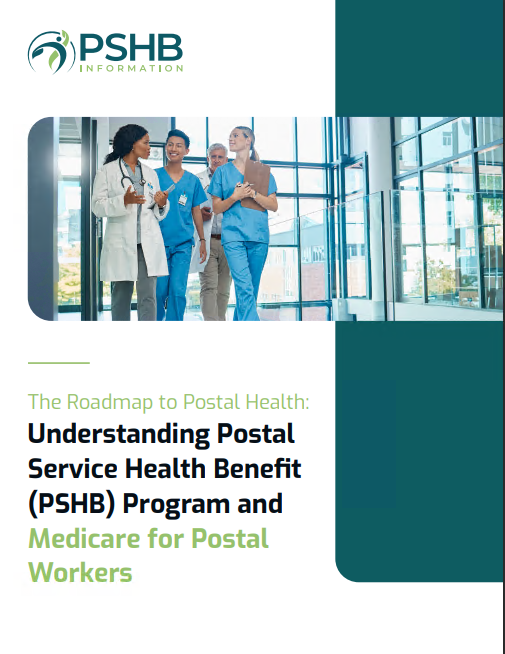Key Takeaways
- Postal workers must review their health benefits for 2025 to ensure they are fully aware of the changes and maximize their coverage options.
- The Postal Service Health Benefits (PSHB) program presents new opportunities, making it essential for workers to evaluate their plans closely.
Why Postal Workers Should Take a Closer Look at Their Health Benefits for 2025
Postal workers play a vital role in keeping the country connected, but their demanding jobs make it crucial for them to maintain their health. As we approach 2025, significant changes in health benefits for federal employees, including postal workers, are expected. The introduction of the Postal Service Health Benefits (PSHB) program is one such change. This new program aims to offer postal workers tailored health insurance options that cater specifically to their needs. Understanding these changes is key to ensuring that postal workers can make informed decisions about their health coverage in the coming years.
Understanding the Postal Service Health Benefits (PSHB) Program
The Postal Service Health Benefits (PSHB) program is a newly established system specifically designed for U.S. Postal Service employees and retirees. Scheduled to be implemented fully by January 2025, this program was created as part of broader reforms to improve the overall efficiency and effectiveness of health benefits for postal workers. Unlike the Federal Employees Health Benefits (FEHB) program, which covers all federal employees, the PSHB will exclusively serve postal workers, offering plans tailored to their unique needs.
Under the PSHB program, postal workers will have access to a variety of health insurance plans that are distinct from those available under the FEHB. The primary goal of the PSHB is to provide more specialized care options, better reflecting the demands and challenges faced by postal workers. For instance, the PSHB may offer better coverage for physical injuries and conditions that are common in physically demanding jobs like mail delivery.
Why Postal Workers Should Evaluate Their Health Benefits for 2025
With the transition from the FEHB to the PSHB program, postal workers need to closely examine the new health benefit options available to them. There are several reasons why this evaluation is critical:
-
Tailored Health Coverage: The PSHB plans are designed specifically with postal workers in mind, which means they may offer more comprehensive coverage for issues commonly faced in this line of work. This could include better access to specialists for musculoskeletal disorders or mental health services, recognizing the physical and mental demands of postal work.
-
Understanding Changes in Premiums and Out-of-Pocket Costs: Although specific pricing details cannot be discussed, it’s important for postal workers to understand how the shift to PSHB might impact their premiums and out-of-pocket expenses. The structure of these plans could differ significantly from what workers are used to under FEHB, so understanding these changes is essential for budgeting and financial planning.
-
Ensuring Continuity of Care: Transitioning to a new health benefits program can sometimes disrupt continuity of care, especially if certain providers are not covered under the new plans. Postal workers should verify whether their current healthcare providers will be included in the PSHB network or if they will need to find new providers.
-
Navigating New Enrollment Processes: With the introduction of the PSHB program, the enrollment process might change, including new deadlines and procedures that postal workers need to follow. It’s crucial to stay informed about these changes to avoid any gaps in coverage or penalties.
Key Considerations for Postal Workers Under the PSHB Program
As postal workers prepare for the transition to the PSHB program in 2025, there are several key considerations to keep in mind to ensure they make the best possible choices regarding their health coverage:
-
Coverage Options: Postal workers should carefully review the various PSHB plans available to them. Each plan will likely offer different levels of coverage, and it’s important to choose one that best fits individual and family health needs. Workers should consider their health history, the types of care they anticipate needing, and any specific conditions they currently manage.
-
Provider Networks: One of the most significant changes could be in the provider networks associated with PSHB plans. Workers should confirm that their preferred doctors, hospitals, and specialists are covered under the new plans. If not, they may need to decide whether to switch providers or choose a different plan that includes their current healthcare providers.
-
Preventive Care and Wellness Programs: The PSHB program might introduce new preventive care options and wellness programs tailored to postal workers. Engaging with these programs can help maintain health and prevent long-term issues, especially given the physical demands of postal work. Workers should investigate these options and consider how they can take advantage of them.
-
Mental Health Services: Given the high-stress nature of postal work, access to mental health services is crucial. Postal workers should ensure that their chosen PSHB plan provides adequate mental health coverage, including access to counseling, therapy, and other mental health resources.
How to Make Informed Decisions About Your Health Benefits
Making informed decisions about health benefits can be challenging, especially with the introduction of a new program like the PSHB. However, there are steps postal workers can take to ensure they choose the best possible coverage for themselves and their families:
-
Review Plan Details Carefully: Before making any decisions, it’s essential to thoroughly review all available PSHB plans. Pay attention to the specifics of what each plan covers, the network of providers, and any potential exclusions. Workers should also consider the balance between premiums, out-of-pocket costs, and coverage levels.
-
Consult with HR or a Licensed Insurance Agent: Postal workers can benefit from consulting with their Human Resources department or a licensed insurance agent who is knowledgeable about the PSHB program. These professionals can provide personalized advice and help workers navigate the complexities of their health benefits.
-
Compare PSHB and FEHB Plans: Although postal workers will be transitioning to the PSHB program, it may still be helpful to compare the new plans with the FEHB options to understand the differences in coverage, costs, and provider networks. This comparison can highlight the advantages of the PSHB program and help workers make more informed choices.
-
Stay Informed About Deadlines and Enrollment Periods: Missing an enrollment deadline can lead to gaps in coverage or missed opportunities for selecting the best plan. Postal workers should mark key dates on their calendars and ensure they complete all necessary paperwork on time.
-
Consider Long-Term Health Needs: It’s important to think beyond immediate healthcare needs and consider long-term health planning. For instance, workers nearing retirement may want to choose plans that offer strong support for chronic conditions or that align well with Medicare options they might use in the future.
Preparing for the Transition to the PSHB Program
As 2025 approaches, postal workers should start preparing for the transition to the PSHB program. This preparation involves staying informed about the latest developments, actively participating in any informational sessions offered by their employers, and starting to review their health benefit options well before the enrollment period begins.
Workers should also consider discussing their options with family members, especially if they have dependents who will be affected by these changes. Understanding the needs and preferences of all family members will help ensure that the chosen plan provides comprehensive coverage for everyone.
Final Thoughts: The Importance of Proactive Health Benefit Management
The introduction of the Postal Service Health Benefits (PSHB) program marks a significant shift in how postal workers will manage their health benefits starting in 2025. While change can be daunting, this transition also offers an opportunity for workers to reassess their health coverage and ensure they have the best possible protection moving forward. By taking a proactive approach to understanding the PSHB program, evaluating available plans, and making informed decisions, postal workers can navigate this change successfully and continue to receive the care they need.
Contact Information:
Email: [email protected]
Phone: 5125552345






